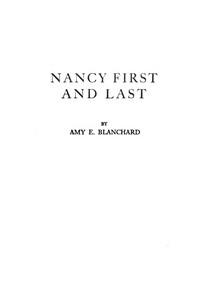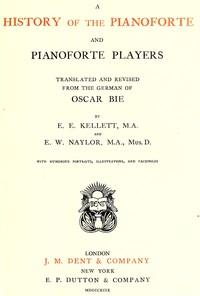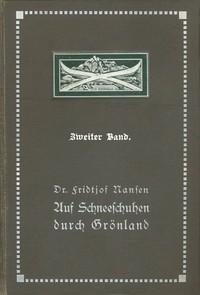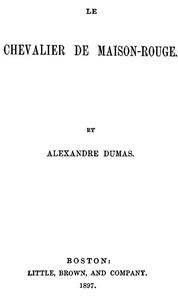Read this ebook for free! No credit card needed, absolutely nothing to pay.
Words: 47260 in 10 pages
This is an ebook sharing website. You can read the uploaded ebooks for free here. No credit cards needed, nothing to pay. If you want to own a digital copy of the ebook, or want to read offline with your favorite ebook-reader, then you can choose to buy and download the ebook.


: The orchestra and orchestral music by Henderson W J William James - Orchestra; Orchestral music Instruction and study
Index 235
Portraits
FACING PAGE Arthur Nikisch 48 Haydn 86 Wagner 114 Charles Lamoureux 128 Theodore Thomas 142 Hans Richter 162 Berlioz 208
PART I
How the Orchestra is Constituted
Instruments Played with the Bow
The modern orchestra is a musical instrument upon which a performer, known as a conductor, plays compositions written especially for it. It is true that an orchestra is a collection of instruments, but these are intended to be so distributed and operated that the result shall be homogeneous, the effect that of one grand organ of sound. Within itself the orchestra embraces a wide variety of tone-qualities and many grades of power and brilliancy, and these are due to the presence of several different families of instruments, each having general qualities, with special traits in the individuals. It is by causing these different families to work together or separately that the composer achieves the expression of his thought, and it is by governing wisely the operations of the individual members and the families that the conductor conveys the composer's design to the hearer.
The orchestra of to-day is the result of a series of interesting developments, of which some considerable account will be given in this volume. But it is necessary before that development can be traced that the reader shall take a bird's-eye view of the orchestra as it now is. Subsequently we shall examine its constitution in detail, but at present we shall simply glance at its general features. Orchestras are not the same for all compositions. Composers select their instruments in these days according to the purpose of the work in hand. But the orchestra employed by Beethoven and his immediate successors in their symphonies is the typical orchestra for independent performance. Curtailed or extended as it may be for special effects, its general plan remains undisturbed.
The modern orchestra, then, is composed of the following instruments: Flutes, oboes, clarinets, bassoons, horns, trumpets, trombones, drums, and other instruments of percussion, violins, violas, violoncellos, and double-basses. These instruments naturally divide themselves into families. Flutes, oboes, clarinets, and bassoons are instruments of wood, and are caused to sound by the blowing of the breath of the players. They therefore form a single group or family, known as the "wood-wind," or, more briefly, the wood. Horns, trumpets, and trombones are instruments of brass, and they form a family known as the brass. The percussion instruments are sometimes called "the battery." Violins, violas, violoncellos , and double-basses are all stringed instruments played with a bow, and they form a group known as "the strings."
At present the reader will not be invited to study the characteristics and possibilities of these groups and their combinations, but will be asked to acquaint himself with the individual instruments composing them. The foundation of an orchestra is its body of strings. Two principal reasons may here be given for this: The strings are capable, when playing alone, of a greater variety of expression than either the wood or the brass, and they never grow tired. Blowers of wind-instruments require frequent periods of rest, but the strings are equal to the demands of an operatic act an hour and a half in length. Because the strings are the foundation of the orchestra we must study them first. The string group is often described as the "quartet." This was correct in early times when composers wrote the same part for the 'cellos and double-basses, but it is not correct now, because the strings almost invariably play in five real parts. The violins are divided into two bodies, known as first and second violins. First violins are the sopranos of the strings, second violins the altos, violas the tenors, 'cellos the barytones, and double-basses the basses. This is not strictly true, because the compass of the viola and of the 'cello enables those instruments to sing above the violins at times. But the normal distribution of the parts of the strings is that which has been given, and this distribution is disturbed only when special effects are required, as we shall see hereafter.
THE VIOLIN
The violin has four strings, the lowest being tuned to the G below the treble clef. The other three are tuned to D, A, and E, the E being that in the uppermost space of the treble clef. The E is called the first string, and the G the fourth. The compass of the instrument as employed in the orchestra is from the low G, three and a half octaves upward, to the C in the sixth space above the staff. This compass is sometimes increased by the employment of what are called harmonics. These are strangely sweet flute-like sounds, which the Germans call the flageolet tones of the violin. They are nothing more or less than what the scientists describe as overtones, or, better, upper partials. It is a fact of acoustics that every musical tone is composed of several tones, the ear hearing plainly only that which is the fundamental sound of the series. In the case of a vibrating string the lesser tones can be utilized. Professor Zahm, in his "Sound and Music," says: "A string emitting a musical note rarely, if ever, vibrates as a whole, without, at the same time, vibrating in segments, which are aliquot parts of the whole." Violinists have discovered that by touching the vibrating string at certain points very lightly with the fingers of the left hand, they can stop the vibrations of the fundamental tone, leaving the upper partial to be heard. These harmonics are very high in pitch and sweet in quality, and cannot be used in loud or vigorous music, but in certain kinds of passages they enable the violin to soar away into realms of ethereal beauty of tone.
Free books android app tbrJar TBR JAR Read Free books online gutenberg
More posts by @FreeBooks

: Nancy first and last by Blanchard Amy Ella Stecher William F William Frederick Illustrator - Love stories; Voyages and travels Juvenile fiction; Young women Juvenile fiction; Families Juvenile fiction; Identity Juvenile fiction


: History of the pianoforte and pianoforte players by Bie Oskar Kellett E E Ernest Edward Translator Naylor Edward W Edward Woodall Translator - Pianists; Piano History






